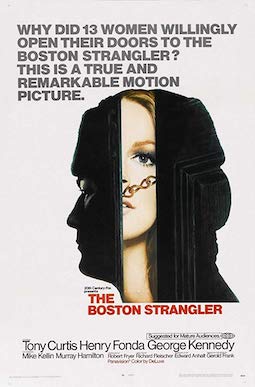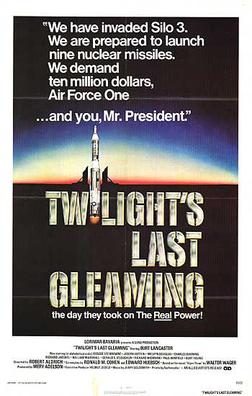Some films are a hundred times more entertaining than they have any right to be and that’s certainly the case with 1974’s Abby.
A blaxploitation take on The Exorcist and Rosemary’s Baby, Abby opens with Bishop Garrett Williams (William Marshall, star of Blacula) taking a peaceful stroll with his students at seminary. Garrett talks about how he will miss them all when he is off on archeological dig in Nigeria. One of his students asks him some questions about Eshu, one of the spirits of the Yoruba religion. Bishop Williams explains that Eshu is a trickster and a force of chaos and carnal excess. Yes, the Bishop explains, he does believe that demons are real.
And indeed, no sooner has the Bishop gone to Nigeria and opened up a small puzzle box adorned with the symbols of Eshu than a demon claiming to be Eshu travels from Africa to Louisville, Kentucky. Louisville is the new home of the Bishop’s son, Reverend Emmett Williams (Terry Carter). Reverend Williams is a good and god-fearing man and his new wife, Abby (Carol Speed), is a devout Christian who sings in the choir, speaks out against drugs, and never curses. That changes, however, once the demon claiming to be Eshu gets inside of her. Soon, Abby is speaking in a very deep voice, laughing at inappropriate moments, demanding constant sex, and plunging a knife into her arm. When the now possessed Abby disappears into the sordid nightlife of Louisville, Reverend Williams and his brother-in-law, Det. Cass Potter (Austin Stoker), try to find her. Eventually, Bishop Williams joins them in their search, knowing that even if they find Abby, it will fall to him to perform the exorcism to save her life and soul.
Abby has so much in common with The Exorcist that Warner Bros. actually ended up suing the film’s producers and distributor for plagiarism. That lawsuit is one reason why it’s not particularly easy to see Abby today. Indeed, I had to resort to watching a washed-out upload on YouTube. Of course, Abby was hardly the first or the last film to rip off The Exorcist. Almost every horror released in the wake of William Friedkin’s classic shocker owes something to The Exorcist. Abby, however, was one of the more finanically successful rip-offs of the film, or at least it was until the lawsuit led to it being removed from theaters. It’s unfortunate that Abby is so difficult to see because it’s actually one of the more entertaining Exorcist rip-offs out there.
A lot of that is due to the confrontation between the dignified and stately William Marshall and the far more hyperactive Carol Speed. Carol Speed gives a performance of amazing energy, whether she’s happily cackling after a woman drops dead of a heart attack or if she’s kicking her husband in the groin. Carol Speed holds nothing back and basically tears through every scene like a force of uncontrollable nature. She provides the perfect counterbalance to Marshall’s more measured performance as the Bishop. Marshall delivers his lines with such authority and conviction that the viewer has no doubt he could probably scare the devil out of everyone. Carol Speed, meanwhile, is so good at playing wild that the viewer wonders how, even if they can get Eshu out of here, Abby will ever be able to go back to being a demure preacher’s wife. Setting Marshall and Speed loose in the seedy nightclubs of Loiusville leads to an occasionally horrific, occasionally silly, but always entertaining between good and evil.
Abby is an entertaining horror film. It’s just unfortunate that we will probably never get to see a good print of it. But then again, maybe that’s for the best. The graininess of the version that I saw actually added to the experience of watching the film. It made me feel like I was in some small theater in the middle of nowhere, watching a print of the film that had taken a long and difficult journey just so it could be seen and appreciated.



 In Montana, four men have infiltrated and taken over a top-secret ICBM complex. Three of the men, Hoxey (William Smith), Garvas (Burt Young), and Powell (Paul Winfield) are considered to be common criminals but their leader is something much different. Until he was court-martialed and sentenced to a military prison, Lawrence Dell (Burt Lancaster) was a respected Air Force general. He even designed the complex that he has now taken over. Dell calls the White House and makes his demands known: he wants ten million dollars and for the President (Charles Durning) to go on television and read the contents of top secret dossier, one that reveals the real reason behind the war in Vietnam. Dell also demands that the President surrender himself so that he can be used as a human shield while Dell and his men make their escape.
In Montana, four men have infiltrated and taken over a top-secret ICBM complex. Three of the men, Hoxey (William Smith), Garvas (Burt Young), and Powell (Paul Winfield) are considered to be common criminals but their leader is something much different. Until he was court-martialed and sentenced to a military prison, Lawrence Dell (Burt Lancaster) was a respected Air Force general. He even designed the complex that he has now taken over. Dell calls the White House and makes his demands known: he wants ten million dollars and for the President (Charles Durning) to go on television and read the contents of top secret dossier, one that reveals the real reason behind the war in Vietnam. Dell also demands that the President surrender himself so that he can be used as a human shield while Dell and his men make their escape.